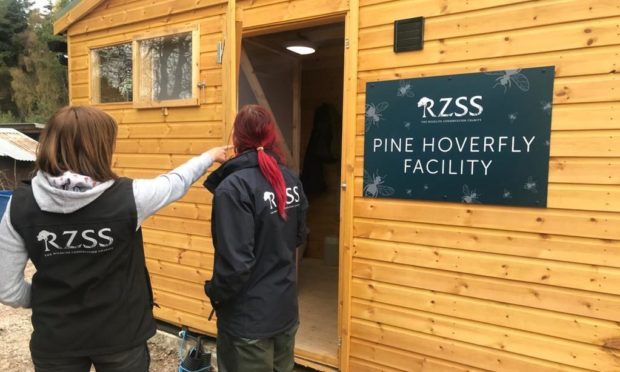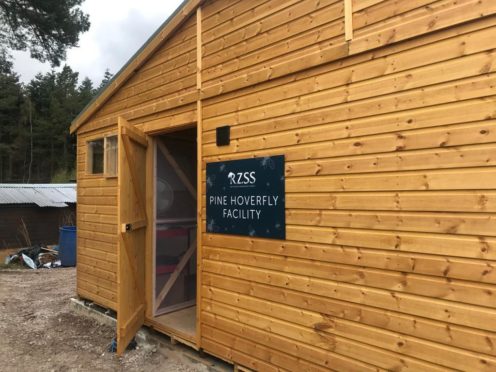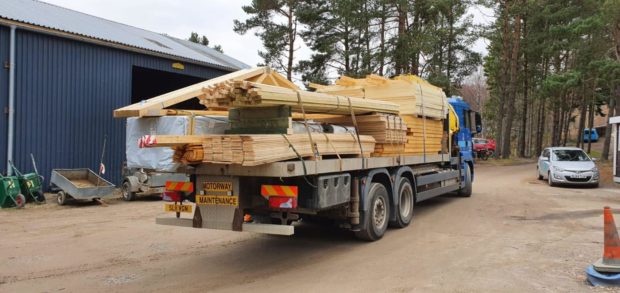A breeding programme for the endangered pine hoverfly has been given a game-changing new home at the Highland Wildlife Park.
The new purpose-built house has boosted efforts to protect the critically endangered insect from extinction.
Though they are a native species, adult pine hoverflies haven’t been seen in the wild in Britain in over eight years.
The British population is currently restricted to a single site in the Cairngorm National Park. A successful breeding season in 2020 led to a need for a larger space to care for them.
Dr Helen Taylor, RZSS conservation programme manager, said: “Having this new facility is a total game-changer for our critical conservation breeding programme. We are so grateful to our funders for supporting this development at such a challenging time.
“We completed the facility just in time to move our pine hoverfly pupae into their new space before they started emerging as adult hoverflies.”
The Highland Wildlife Park, near Kingussie, is home to other endangered species including Przewalski’s horses and tigers. It recently reopened to the public, however the new facility is currently not accessible.
Easily overlooked
Ms Taylor emphasised the importance of looking after the pine hoverflies, no matter how small they may be.
She said: “Tiny species like the pine hoverfly are easily overlooked, but invertebrates are crucial to healthy ecosystems and are disappearing at an alarming rate. Animals like pine hoverflies play key roles in ecosystems, from pollination to decomposition, as well as providing an important food source to many other species.
“The more invertebrate species we lose, the less well our ecosystems will be able to support the animals that depend on them, including humans.”
It Must Have Been Larva, But It’s Hover Now
The new pine hoverfly facility was made possible by a number of funders including Marvelous Europe Inc, The National Geographic Society, Cairngorms National Park Authority, Forestry and Land Scotland and NatureScot.
It includes a larval rearing room, an adult flight room with large enclosures for the adult hoverflies to fly and mate in, and an area for staff to prepare the abundance of flowers the adult hoverflies need for food.
Marvelous Europe Inc ran a competition in which the winner was able to name the larvae room and pupae – the form the insects take in their second stage of growth.
Following this, pupae Larva Croft and Pine-al Ritchie will take temporary residence in It Must Have Been Larva, But It’s Hover Now.


